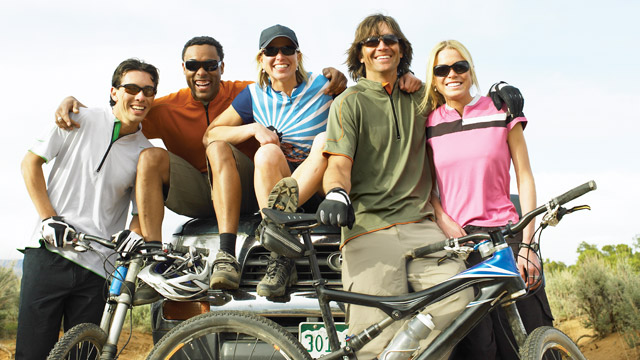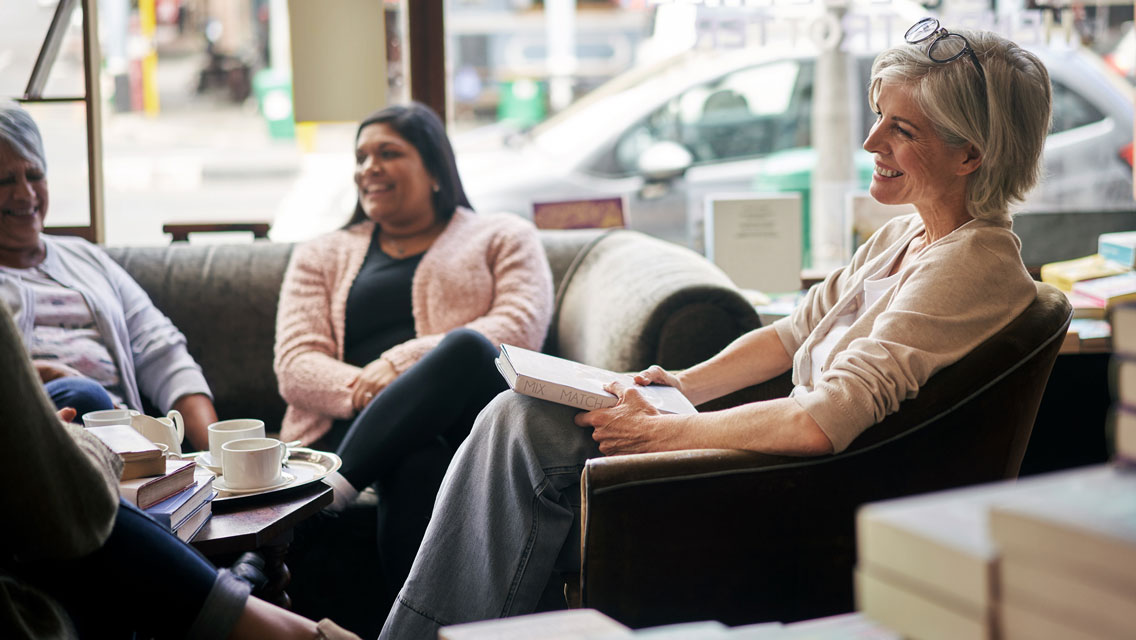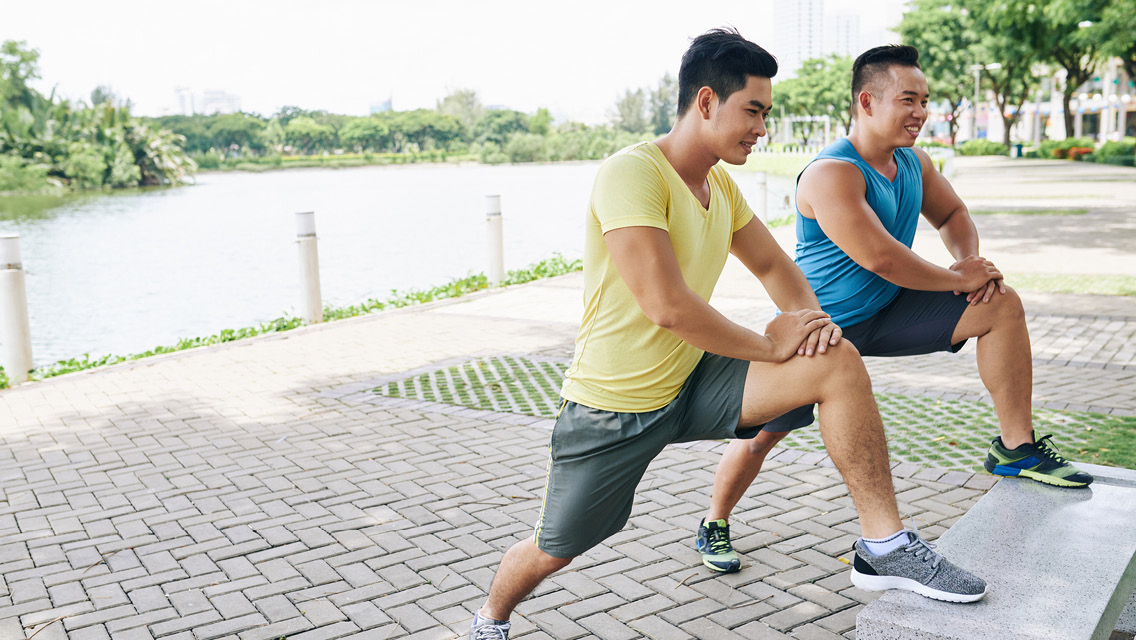Building community is easier (and more fun) than you might think. Your ragtag neighborhood softball league shows that group activities foster meaningful relationships. National Night Out and neighborhood watches have measurable effects on neighborhood safety and unity. And the community garden you help tend is living proof that working together can yield healthy bodies and healthy blocks. There are countless venues where you can connect with others: neighborhood garage sales, farmers’ markets, dog parks, crafts groups, play groups, and prayer groups. Here are a few more ways people are forging connections that you might not have heard about, with some ideas for how to take part.
Pocket Neighborhoods
Informal micro-neighborhoods — like close-knit cul-de-sacs or front stoops where neighbors congregate — have always been part of our lives. Architect Ross Chapin builds on the potential of such spaces by designing and promoting “pocket neighborhoods” — groupings of compact houses or apartments nestled around communal green spaces, such as courtyards, pedestrian walkways, gardens, or even conjoined backyards. “These are settings where nearby neighbors can easily know one another,” says Chapin, “where empty nesters and single householders can find friendship or a helping hand nearby, and where children can have [stand-in] ‘aunties’ and ‘uncles’ just beyond their front gate.
“Urban, suburban, or rural — pocket neighborhoods can be anywhere,” Chapin says.
Pocket Neighborhoods: www.pocketneighborhoods.net
Little Free Libraries
It all started with a sign that read “Free Books.” Todd Bol built the first Little Free Library in his front yard in Hudson, Wis., in 2009. The birdhouse-like book exchange was a tribute to his mother, a former teacher and lifelong reader. Today there are more than 17,000 Little Free Libraries in 60 countries around the world.
Mini-libraries run on the honor system: Take a book when you see one you like and contribute a book when you have one to share. As such, the libraries generally hold something for everyone — from gardening guides to Russian novels to picture books.
Beyond promoting literacy, Little Free Libraries connect people. When patrons pause on the sidewalk to browse, they are just as likely to strike up a conversation as to find their next read. “The reason Little Free Library has been successful is that people tell us, constantly, ‘I’ve met more neighbors in a week than I’ve met in 30 years,’” Bol says.
Little Free Library: www.littlefreelibrary.org
Food Swaps
Too much homemade kimchi in the pantry? Trade it for a jar of blackberry jam, a half-dozen duck eggs, or a fresh loaf of bread at a food swap — and mingle with other likeminded food lovers while you’re at it.
Part trading post, part social gathering, food swaps are growing in popularity among home cooks, canners, bakers, brewers, and urban farmers. The BK Swappers in Brooklyn, N.Y., PDX Food Swap in Portland, Ore., and Choo Choo City Swappers in Chattanooga, Tenn., are just a few of the groups encouraging dedicated cooks and gardeners to barter their goods, reduce food waste, and make connections.
“These social events are a win-win for everyone,” says Kate Payne, an Austin, Texas, food swapper and author of The Hip Girl’s Guide to Homemaking. “Sharing and trading food helps to maintain creative kitchen inventories, and it’s fun to meet others who enjoy growing, foraging, or making food.”
Food Swap Network: www.foodswapnetwork.com
Roadside Gardens
When Ron Finley (pictured above) noticed it was easier to get liquor than lettuce in his South Los Angeles neighborhood, he founded L.A. Green Grounds with Florence Nishida and Vanessa Vobis. They began by planting a vegetable garden on the strip of scrubby grass between Finley’s sidewalk and the street, freely sharing the peppers, eggplants, and melons with the neighborhood. Now they host “dig-ins” at neighborhood homes across Historic South-Central — guerrilla gardening parties where recipients don’t pay a dime for garden planning or labor; all that’s required is a commitment to help at two other digs.
Roadside gardens change the dynamics of a street, says Nishida. “People walking or even driving by stop, look, make comments, and finally ask questions, which breaks through that unwritten urban commandment: ‘Thou shalt not speak to or look at strangers,’” she notes. “And a neighborhood with residents spending more time chatting over the tomatoes or collards is a safer neighborhood.” If roadside gardens aren’t legal in your city, you can still plant a welcoming front-yard garden with a sign: “Free Veggies.”
L.A. Green Grounds: www.lagreengrounds.org
Communal Cars
Zipcar, the world’s largest car-sharing service, was the first U.S. company to provide an alternative to the hassles and high cost of car ownership. Now there are other ways to get on the road and connect with others. Apps like RelayRides and Getaround are car-sharing services that let neighbors rent cars from each other. Users go online to reserve a car or list theirs as available for service. For a taxi alternative, there’s Lyft, which bills itself as “your friend with a car”: A driver picks you up, welcomes you to the passenger seat with a fist bump — the official greeting of Lyft members — and takes you where you need to go. You can also hitch a ride with environmentally friendly Zimride, a carpool-like service that allows drivers and passengers to find their match based on destinations as well as interests and music tastes.
Or just start a car-sharing club with your friends. With most personal cars sitting idle 22 hours a day, a communal car may be a great way to relieve some financial pressure and connect with your social circle.
Zipcar: www.zipcar.com
RelayRides: www.relayrides.com
Getaround: www.getaround.com
Lyft: www.lyft.com
Zimride: www.zimride.com
Collective Biking
The Baltimore Bike Party is like “a roving festival on wheels,” says founder Tim Barnett. Local cyclists — up to 1,500 of them — gather to ride a different route through the city every month. Costumes are encouraged and reflect themes like a beach party, outer space, or the ’80s. Onlookers cheer cyclists on. At the end of the route, riders socialize at a rollicking after-party with music, beer, food trucks, and photo booths.
“One of the beauties of the bicycle is that most anyone can ride one,” says Barnett. “That — combined with it being a free event with no registration — allows us to have young inner-city kids riding wheelies next to doctors and lawyers who drove in from around the county.”
Noncompetitive group rides are popular throughout the United States. Citywide bike rides and European-style gran fondo tours are great wheeled get-togethers. Critical Mass, a community-building monthly event, started in San Francisco in 1992 as a way to increase the visibility of bicyclists; it has now spread to more than 300 cities around the world. RAGBRAI, a weeklong ride across Iowa, has been going strong for 41 years.
Finally, the Open Streets Project hosts lively block parties in cities across North America to raise awareness about the need for bike- and pedestrian-friendly streets. Major urban thoroughfares are temporarily closed and used as sites for the gatherings.
Baltimore Bike Party: www.balitmorebikeparty.com
Life Time Gran Fondo: www.ltgranfondo.com
San Francisco Critical Mass: www.sfcriticalmass.org
RAGBRAI: www.ragbrai.com
Open Streets: www.openstreetsproject.org
Flash Mobs
Flash mobs are the community events of the digital age. Strangers organize online, meet at a designated time and place, then perform a random, entertaining act in public — like an elaborate dance to upbeat music. Now, quieter mobs are emerging, as people gather for large-scale public displays of yoga or meditation.
Take MedMob, a group that organizes hourlong meditations in public places. Although the group leaves some passersby flummoxed, that is partly the point: Expose the unexposed to meditation and create an environment where anyone can meditate. The group started in Austin, Texas, in 2011, and now has monthly events in 400 cities worldwide.
“MedMob strengthens local communities because it brings people together,” says cofounder Patrick Kronfli. “Friends meet new friends. Business partnerships have birthed from MedMobs, and so have relationships.”
MedMob: www.medmob.org
Tool Sharing
Need a ladder, circular saw, or cement mixer — but just for a day or a week? Check it out from a tool library. One of the first tool-lending libraries was established in Berkeley, Calif., as part of the public library system. This community hub has more than 2,500 tools, including Weed Eaters, demolition hammers, and electric snakes. Staffed with helpful “tool guys,” it’s also a center of know-how, advice, and camaraderie.
“The tool library has brought many people together over the years,” says supervising librarian Amanda Myers. Case in point: After borrowing tools, two patrons got married and had a child.
To see if there’s a tool-lending library in your area — or to learn how to start one — check out the map and essential resources from Local Tools and Share Starter.
Local Tools: www.localtools.org
Share Starter: www.sharestarter.org
Community-Supported Art
If you join this CSA, you won’t get rutabagas, corn, or kale — you’ll get a box full of fresh local art. Community-supported art projects allow patrons to buy a “share,” then pick up boxes of art at intervals throughout the designated season. The boxes can contain nearly anything: sculptures, prints, ceramics, photographs, and more. Because shares are priced reasonably, the art world becomes accessible to more people while championing local artists.
The first community-supported art share was launched by Springboard for the Arts in St. Paul, Minn., in 2010. There are now CSAs in cities from Miami to Philadelphia to Lincoln, Neb. Many organize meet-ups for the artists and shareholders, making the exchange as personal as possible. To help you bring the program to your community, Springboard offers the CSA Replication Toolkit.
Springboard for the Arts: www.springboardforthearts.org/community-supported-art-csa



This Post Has 0 Comments